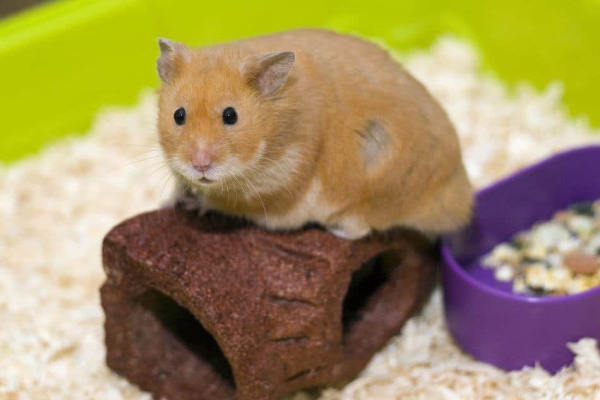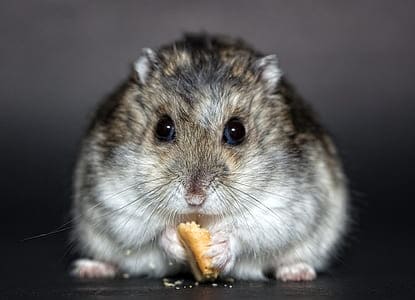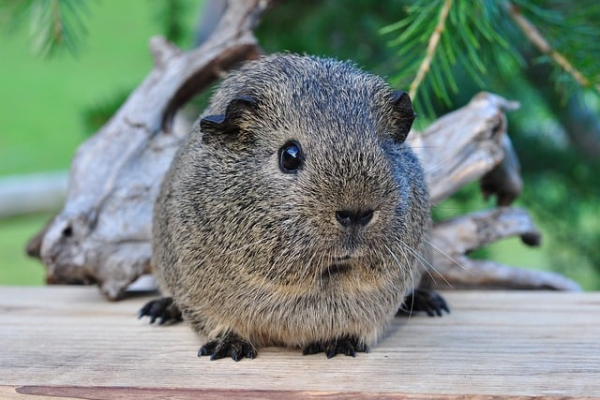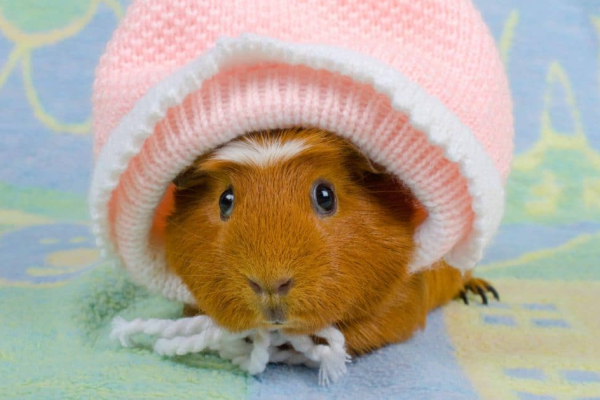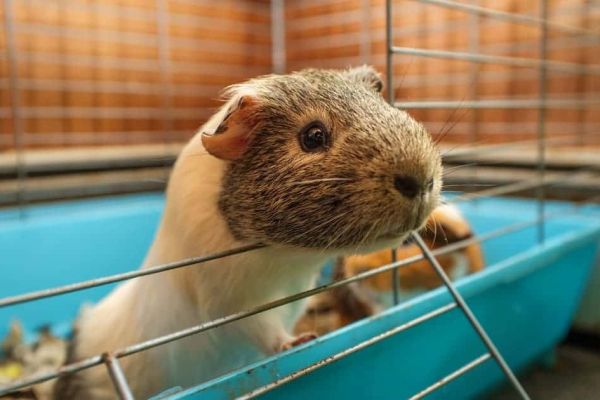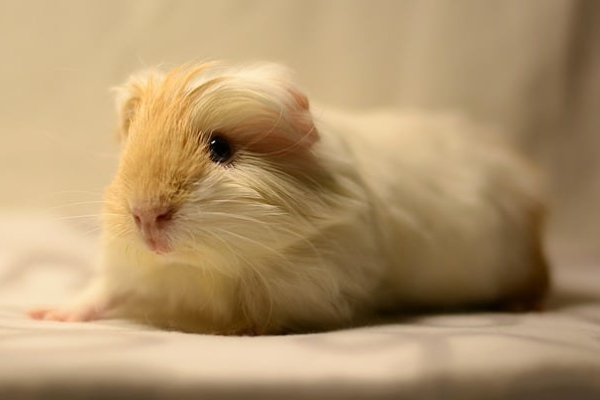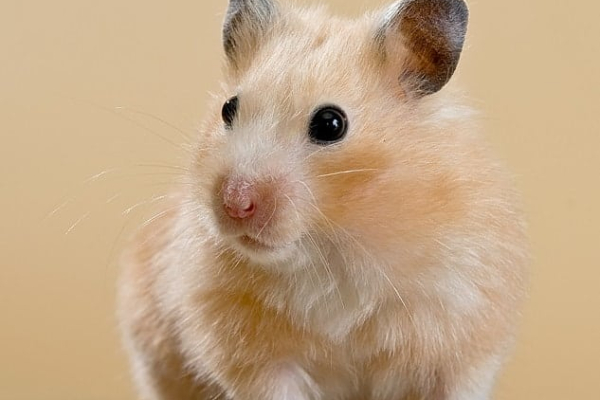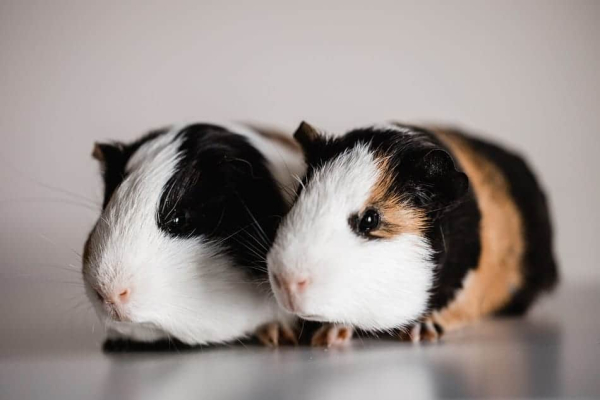
Hamsters are nocturnal, so bonding with a hamster can be difficult. If you are awake in the morning, this may not be the pet for you. Hamsters will be up at night and will create noise. If you are awake at night, then this may be the pet for you.
[toc wrapping = right]
Some things a hamster needs are a water bottle, bedding like straw or shredded paper, an exercise wheel and chew toys. Some cost-effective toys are toilet paper tubes and wooden ladders. This will keep your hamster happy for its lifetime!
There are 24 species of hamsters. The most common species are the Syrian golden hamster, Chinese hamster, Campbell’s or dwarf hamster, Djungarian or winter-white Russian dwarf hamster, and the Roborovski hamster. The lifespan of a hamster is between two to four years old. Hamsters only grow to be 34 centimeters long.
One hamster requires 2 feet of space for their home. If the cage is not big enough, it will cause fighting between hamsters. Having a cage that is solid on the bottom with wire mesh on top is the perfect container for hamsters.
The diet of a hamster consists of fruit, seeds, greens, nuts, cracked corn, and vegetables. While most of the feed is available in packages at the pet store, giving fresh fruit and greens will make your hamster happy. Hamster’s teeth never stop growing, so make sure you provide hard digestible items like dog biscuits and cleaned tree branches.
Gerbil

Gerbils are very social animals. In nature, they colonize and are happier and healthier with a companion. They even like to socialize with humans. If you are going to purchase gerbils, you should get two. One rule of thumb with gerbils is: same age, same gender, and same family.
Gerbils can grow to be 40 centimeters, just a little longer than hamsters. The lifespan of a gerbil is three to five years, with the females out living the males. Gerbils are almost odour free and require minimal care.
Gerbils are diurnal and are awake both during the day and at night. The do require lights and curtains drawn during the day and lights off and curtains closed at night to maintain their day-night schedule. Gerbils are naturally curious. Even the simplest toys will lead to endless antics.
Gerbils like the same toys as a hamster: toilet paper tubes, wooden ladders, and exercise wheels. Although with a gerbil, make sure to get a solid wheel because gerbil tails are longer and will get stuck in the wire, which will result in injury.
Their diet consists of similar foods as a hamster, like fruit, vegetables, nuts, seeds, cracked corn and greens. Fresh is always better, but for simplicity basic hamster and gerbil feed are mixed. They like variety, so it is okay to mix rabbit pellets, crushed oats, and wheat into their diet. Gerbils particularly like bananas, apples, carrots, dandelions and lettuce.
Guinea Pigs
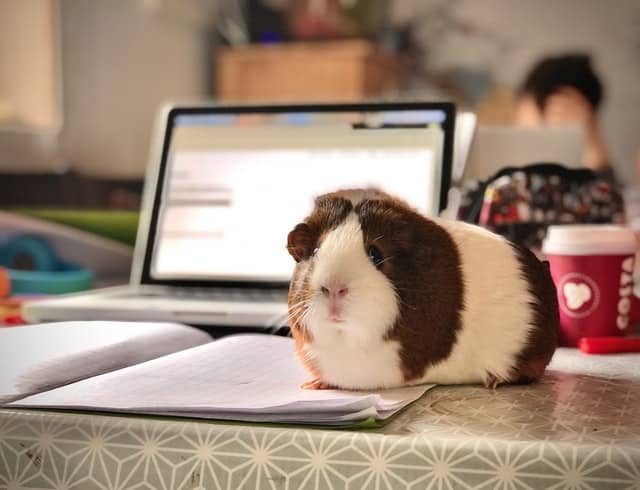
Guinea pigs are social animals. They are at their happiest living with other guinea pigs. Like gerbils, you should have the same gender for any unwanted litters. Personality differences in guinea pigs can cause tension, but to avoid this introduce them at a young age so they can bond.
Guinea pigs live to be five to seven years old. They can get up to 20 to 40 centimeters, males being longer and females, and weigh one to three pounds. There are approximately 13 breeds, with the most popular being the Cavia porcellus. The name guinea pig came from the squealing sound they make, as well as being transported to and from Guinea in West Africa.
The diet of a guinea pig consists of greens, root vegetables, fruit, grasses, and hay. They are diurnal like gerbils, and they like to stick together when they eat and groom. Guinea pigs communicate through chirps, purrs, rumbling and squealing.
Guinea pigs need a large cage and time on the floor to run around. Making a homemade cage on the floor is easy and cost effective and will keep your guinea pig happy and healthy. Because of their size, it’s harder for them to escape.
Guinea pigs don’t dig their homes. They prefer a den or burrow. Providing a guinea pig a shelter is highly recommended. They also need a water bottle and a food dish. They like to play with crumpled paper, toilet paper rolls, cardboard boxes, stuffed socks, chew toys and an obstacle course.
Guinea pigs are very easy to tame. They may seem skittish at first but will get used to you handling them fast. They are unlikely to bite when they are stressed or upset. Guinea pigs are sone of the few animals that cannot produce their own vitamin C. They will need to get this though their diet.
Hamster vs. Gerbil vs. Guinea Pig
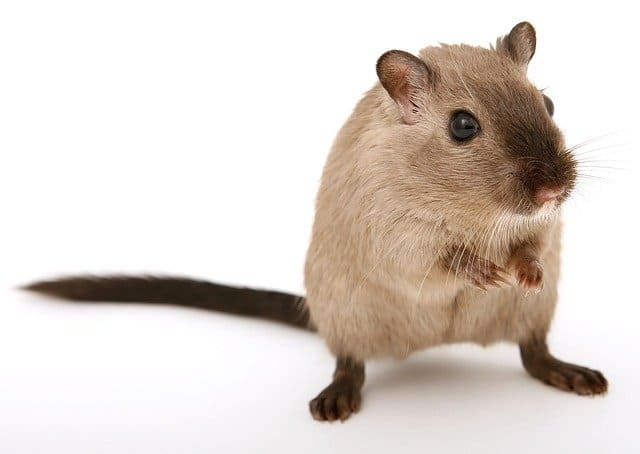
Hamsters, gerbils are all rodents, but they all have different needs and habits. There are 13 breeds of guinea pigs, 24 breeds of hamsters, and 90 breeds of gerbils. They are all sociable and require a companion.
Sleep
Hamsters are nocturnal animals, which means they only sleep during the day. If you were hoping to see your hamster during the day, you will be disappointed. They are active at night and will make noise. If you are a light sleeper this may not be the pet for you.
Gerbils are diurnal. They will take frequent naps during the day and night. They like to burrow and make a nest in the corner of the cage. They require lights on during the day and lights off during the night to keep their schedule correct.
Guinea pigs are also diurnal. They will take naps during the day and night. They don’t like to dig their bed; they would rather find a vacant den. Providing a shelter so your guinea pigs can sleep is required.
Diet

Hamsters have a diet of fruit, seeds, greens, nuts, cracked corn, and vegetables. They will collect food in their cheeks to transport it and store it. They love fresh fruit and vegetables, but most pet shops have a prepackaged food bag containing everything they need.
Gerbils like to eat a similar diet to hamsters, but they also like different treats. They like fruits like bananas, apples, carrots, dandelions, and lettuce. For ease of access, gerbil, hamster, and mice food is generally put together in one bag because they have the same diet.
Guinea pigs’ diet is similar but contains other vegetables. They like greens, root vegetables, fruit, grasses, and hay. In their natural habitat, they will root and dig for their food. Since guinea pigs can’t produce their own vitamin C, they need to get it from their diet. Getting a vitamin C tablet for your guinea pig is also an option.
Guinea pigs, Hamsters and gerbil’s teeth never stop growing, so feeding them some hard, crunchy food will help file them. This consists of hay, pellets, and dog biscuits. They can also chew on tree branches.
Socializing

Hamsters are very quiet animals. They can live in a colony, companionship or alone. They don’t squeal or purr like a guinea pig. They can communicate through expressions and pheromones. The most noise you will hear from your hamster friend is movement from walking around or digging a new burrow.
Gerbils are very sociable. They need to live with another gerbil. They can communicate through expression and pheromones. They also love to interact with humans. Since they are diurnal animals, you will get time to play with your gerbil friends.
Guinea pigs make different noises to signal happiness, sadness, when they need food or attention. They communicate to other guinea pigs, as well as humans to let you know when they need attention or food.
Hamsters and gerbils don’t make a sound to communicate. They can read each others’ expressions and signals. The only time a hamster or gerbil will make a peep is if it is suddenly hurt. Guinea pigs make different noises to communicate. They communicate through purrs, squealing, and rumbles.
Habitat

Hamsters like to hide during the day because they are nocturnal. At night when they are awake, they like to play with their chew toys. They like to run on their exercise wheel in their cage and like to roam around in a plastic slotted ball so they can’t get lost. They also need a water bottle and wire mesh cage with a solid bottom so they can make their nests. The cage should be 2 feet.
Gerbils require the same kind of step up as a hamster. They need a water bottle, toys, ladders, and a wheel. However, the exercise wheel needs to be solid because they can injure their long tails easily. They also need about 2 feet per gerbil. Gerbils also need a solid bottom to their cage so they can burrow down and make a nest to sleep in.
Guinea pigs need a lot of space. Blocking off an area on the floor is a lot better than acquiring a cage. They need a water bottle, toys, hay, and a shelter they can sleep in. Guinea pigs are bigger animals, so they will need a big area, approximately 3-4 feet per animal.
Body and Lifespan

Hamsters are the smallest out of the three. They only grow to be 10 centimeters long. Males grow longer than females. Hamsters only live to be about 2-3 years old. Hamsters have a small stubby tail, cheeks that can hold and store lots of food or bedding, and tiny nails to help them dig fast.
Gerbils can grow to be around 11 centimeters long, just a little longer than a hamster. They have a longer tail which helps them with balance. They have the same cheeks that can store food or bedding like hamsters do, and tiny claws to help them dig a nest.
Guinea pigs grow to be 20 to 40 centimeters, depending on the species. They can live for five to seven years. They weight about 1-3 pounds and are solid animals. They have a tiny tail for balance, claws to rummage though the forest and find food, and a longer snout. All three animals have similar traits like claws and teeth that always grow. They each have very distinct colorings and sizing that make them different.
Training

Hamsters are easy to take care of and require minimal care. If they are startled or scared, they will bite though. They also bite when they are woken up from their sleep. They have poor eyesight and cause them to get scared easily. Being with your hamster at night when they are awake will prevent them from biting. They are hard to train.
Gerbils also require minimal care. They rarely bite and make great pets for children. Since they are awake during the day and night, you are more likely to spend time with your gerbil so they can bond with you. They are easy to train.
Guinea pigs require some care. They need baths because some breeds have long hair. They also need lots of time exercising and exploring. Guinea pigs are easy to tame and train. They are skittish but bond easily. They rarely bite when they get scared.
Fun Facts
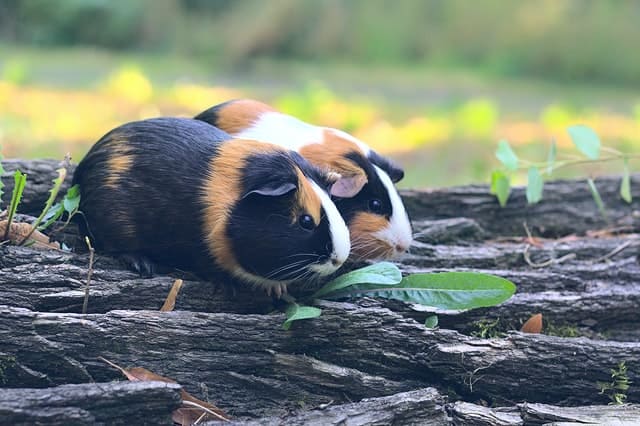
Fun facts about hamsters are they have poor eyesight, their teeth never stop growing, and can be solitary animals. Hamsters were first discovered in Syria, but also lived in Greece, Romania, Belgium, and northern China. In the wild, they like warm, dry areas like steppes, sand dunes and edges of deserts. They also have a sweat gland that they use like breadcrumbs to find their way back home.
Gerbils also have teeth that never stop growing and have sweat glands that they use for tracking, although it is on their belly. They have a dozen different colors such as black, agouti, gold, cinnamon, orange, and lilac. One of the most common diseases in gerbils is epilepsy. They also tend to hide their illnesses.
Guinea pigs were founded in Guiana and squealed like a pig. They have 14 toes, 4 on each front foot and 3 on each back foot. In Germany, they are called meerschweinchen, which means “little sea pig.” Guinea pig babies are born with fur and their eyes open.

